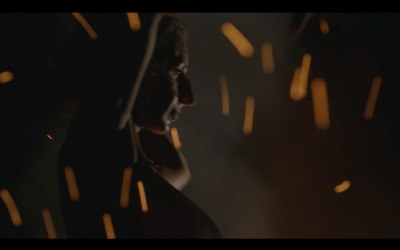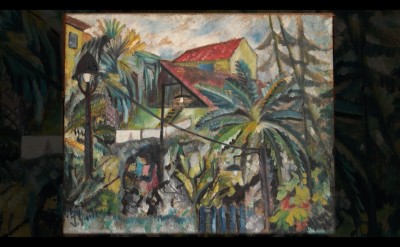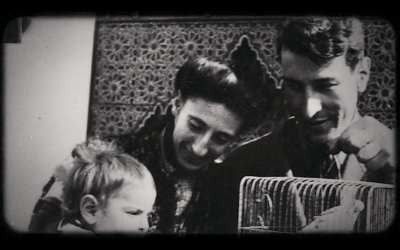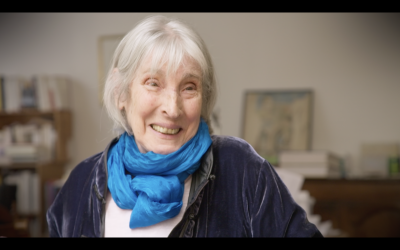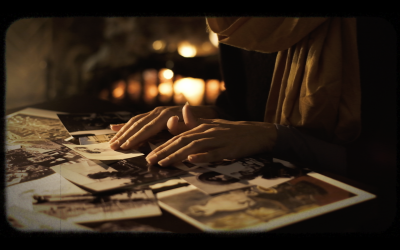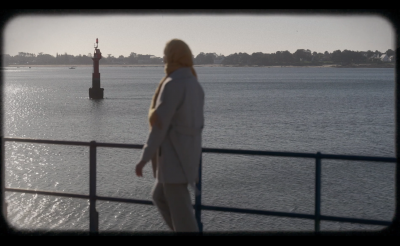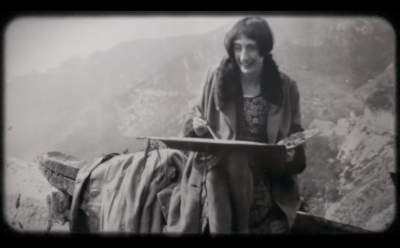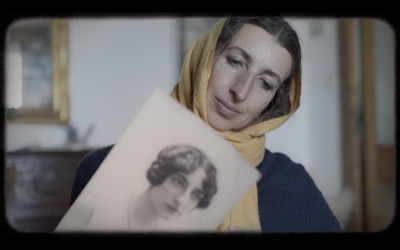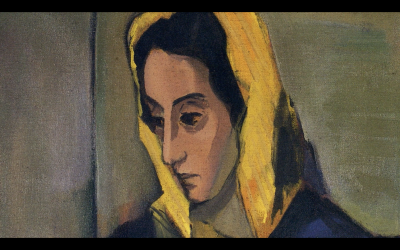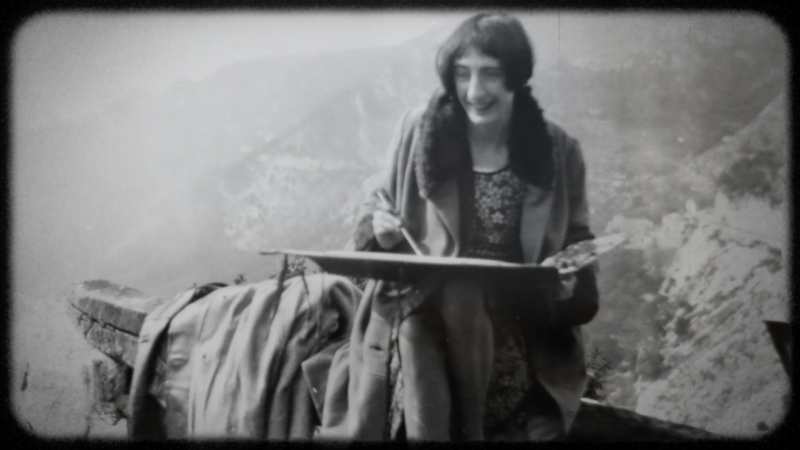Jeannine Guillou was the first companion of the French painter Nicolas de Staël, having met him in Marrakesh in 1937. “Portraits of Jeannine” portrays the life and work of a passionate, independent woman and a painter in her own right.
About
Synopsis
Jeannine Guillou was the first companion of the French painter Nicolas de Staël, having met him in Marrakesh in 1937. “Portraits of Jeannine” portrays the life and work of a passionate, independent woman and a painter in her own right.
The film draws from Jeannine's own writings and the accounts of her daughter Anne de Staël to present an intimate portrait of a forgotten artist. It pays homage to an unjustly overlooked body of work that has yet to be discovered.
The artist
The painter Jeannine Guillou was born in 1909 in Concarneau, Finistère.
Jeannine, a cousin of the artist Jean Deyrolle, was born into a bourgeoise family. She started painting when she was 15 years old.
In 1929, aged 20, she enrolled at the École des Arts Décoratifs in Nice and married one of her teachers, the Polish painter Olek Teslar. In 1931 they had a son, Antoine Tudal, or Antek for short. Jeannine became a Polish national.
From 1930 to 1937, they travelled extensively between Poland, the Carpathians, Nice, Morocco and Concarneau. In 1935, she exhibited her paintings in Fez alongside her cousin, the painter Jean Deyrolle, to great acclaim. Her talent was described as "virile and nervous".
In 1937, while travelling in Morocco with her husband and son, Jeannine Guillou met Nicolas de Staël in Marrakesh. The two became inseparable.
After spending some time in Italy, the couple returned to Paris in 1939. The following year, they settled in Nice, a free zone at the time. Here they made friends with Alberto and Suzi Magnelli, Marie Raymond and Fred Klein (the parents of Yves Klein), Sonia Delaunay, Jean Arp, Le Corbusier and the great bookseller Jacques Matarasso.
In 1942, their daughter Anne de Staël was born.
From the moment they met, Jeannine and Nicolas had a symbiotic artistic relationship. It was the sale of Jeannine's paintings, however, that kept the struggling family afloat.
"She left all the colours for Nicolas so that he could paint. That was more important to her,” says Anne de Staël. “She went to the man she loved most in the world", and, as Pygmalion would have done, “she helped him, magnificently, to become the artist he was meant to be”.
In 1943 they left Nice for Paris, hoping that life would be easier there. The gallery owner Jeanne Bucher put them up in Vieira da Silva's studio, then in the mansion of the great French architect Pierre Chareau, 54 rue Nollet.
Here they met Braque, Picasso, Domela and the poet Pierre Reverdy.
Braque and Magnelli both liked Jeannine’s work, and Nicolas himself told a couple of collectors, "Take one of Jeannine's paintings, they’ll be more accomplished.”
Jeannine died on 27 February 1946 at the age of 36, after undergoing the therapeutic termination of a pregnancy.
She was laid to rest in the cemetery of Montrouge, Hauts de Seine. When Nicolas died in 1955, he was buried beside her.
In 2011, the Picasso Museum in Antibes, curated by Jean-Louis Andral and Daniel Abadie, held an exhibition in her honour: La vie dure. La rencontre Nicolas de Staël - Jeannine Guillou. (The hard life. Nicolas de Staël meets Jeannine Guillou.)
Sources:
- Catalogue of the exhibition La vie dure. La rencontre Nicolas de Staël - Jeannine Guillou, Picasso Museum, Antibes, published by Silvana Éditoriale.
- Interview with Anne de Staël, Portraits de Jeannine, by Catherine Aventurier, 2024.
Director's statment of intent
The name Jeannine Guillou is forgotten to us now. Nicolas de Staël’s radiant companion, born in 1909 in Concarneau and a painter in her own right, has fallen into oblivion.
Jeannine and Nicolas had one surviving child, the wonderful Anne de Staël. Of Jeannine, only a few paintings remain, garnered from Anne's house or the storerooms of a few museums.
Yet Jeannine Guillou was a true artist, a free-spirited, luminous being who captivated the young Nicolas de Staël and helped him find his way.
I followed in the artist’s footsteps; I sought out Anne's accounts of her mother, dancing one night in a Moroccan square; I went for a walk in Concarneau to revisit her childhood home, with the top floor that faces the sea.
This film is a quest for discovery, embodied by my sister, the dancer Marianne, who plays Jeannine as well as my alter-ego. To quote Francis Bacon, "When you paint a portrait, aren’t you painting yourself?”
Catherine Aventurier
Idea for the project
The idea for the film came about in September 2020, in the concert hall of Le Mans at the MIFAC film festival for contemporary artists. We had come as a team to show support for our selected films.
As we were leaving the screening, Catherine Aventurier, the director of one of our Tandem films and director of the documentary collection Duos d'artistes (Artistic Duos) on France 5, said to our little group: "I'm looking for ideas for new duos". Without missing a beat, Amaury Mulliez replied: "Why not Nicolas de Staël and his first wife, Jeannine Guillou?"
Amaury is a great fan of de Staël and had learned about this extraordinary love story between two painters from his mentor, Antoine Tudal, aka Antek, his screenwriting teacher, director and photographer. Jeannine Guillou was Tudal’s mother and Nicolas de Staël was his stepfather.
Amaury also knew Anne de Staël, the painters’ daughter, and Viviane Montagnon, Tudal's widow. So we had direct access to the source!
The Duo project fell through, but Jeannine could no longer be left to her sad fate, forgotten by the history of art.
The entire team of AM Art Films fell in love with this unconventional project. Catherine Aventurier, Tamsin Genillier and I immersed ourselves in scientific research. We would like to express our respect and gratitude to Anne de Staël, daughter of Jeannine and half-sister of Antoine, for her dedication and generosity. Anne invited us into her home several times and entrusted us with valuable documents, including notebooks, photos, and original drawings by Jeannine herself.
Without Anne’s support, Portraits of Jeannine would not have been possible, and we treasure the memory of those vivid encounters.
Running like a golden thread through the film – in which Jeannine is embodied by the director’s sister, the dancer Marianne Aventurier – is the yellow shawl from Nicolas de Staël's painting, Portraits de Jeannine (1941-42). We hope that this version of Portraits of Jeannine will be discovered and loved by many.
Delphine Perru Artistic Advisor, AM Art
Technical data
| Director | Catherine Aventurier |
| Cinematographer | Richard Cloué Eric Genillier |
| Editor | Catherine Aventurier Emmanuel Baert Gaëtan Chabanol |
| Music composer | Dimitri Leroy |
| Duration | 13:20 |


